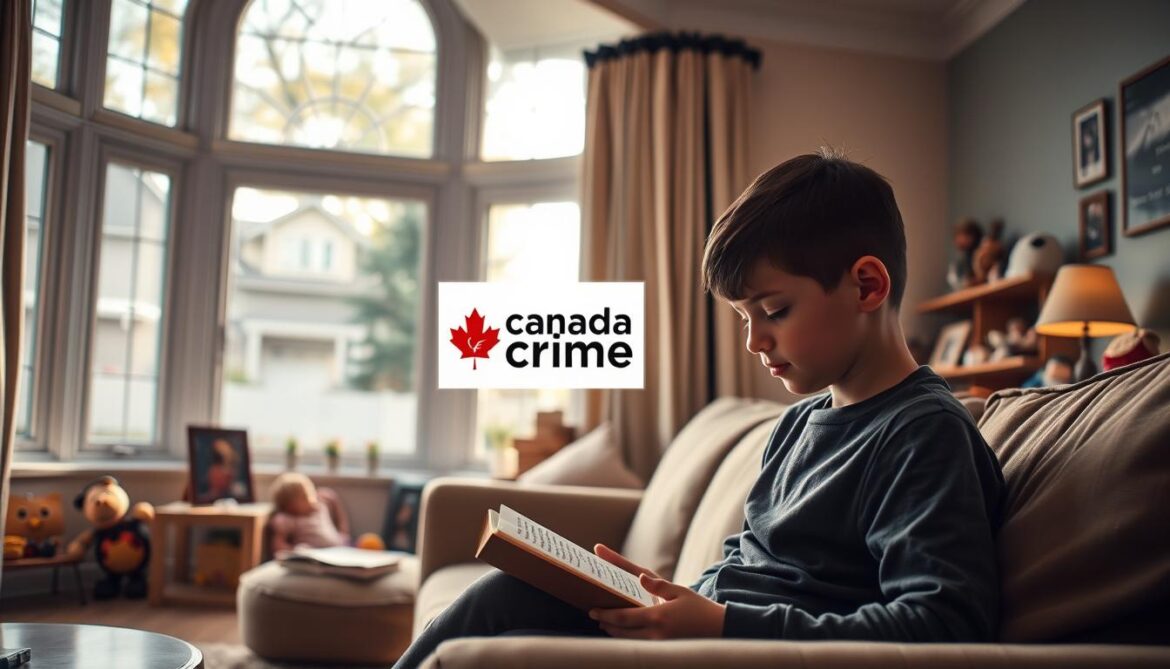Did you know over 460,000 children go missing every year in the U.S.? This big number shows why keeping kids safe is so important. As parents, it’s key to be on guard and take steps to protect our kids. This article gives tips and tricks to keep children under 14 safe from abduction. You’ll learn ways to improve your kids’ safety.
First, understand why child safety matters. We’ll share smart steps to make a safer space for your kids. Follow along for tips to guard against dangers.
Understanding the Reality of Child Abduction
Child abduction worries parents everywhere, yet many beliefs about it are wrong. Understanding true statistics and debunking myths offer clarity on this issue.
Statistics on Child Abduction
Most child abductions involve someone the child knows, says the National Center for Missing & Exploited Children. Knowing these real abduction statistics can change how we protect kids. Here are key facts on child abduction:
| Type of Abduction | Percentage |
|---|---|
| Family Abductions | 63% |
| Acquaintance Abductions | 27% |
| Stranger Abductions | 10% |
Common Misconceptions
Many think strangers mostly do child abductions. But, it’s essential to fix these ideas with abduction myths debunked using real abduction statistics. Clearing up these myths cuts down fear and helps focus on true safety steps. By grasping these child abduction facts, you can teach your kids and community better.
Teaching Children About Abduction Safety
Talking to kids about safety is key. Adding abduction prevention role-play to everyday life can aid their understanding of how to handle risky situations. Kids learn to defend themselves better through fun, interactive ways.
Role-playing Scenarios
Role-playing is important in teaching kids how to stay safe. It helps them learn different ways to protect themselves:
- Practicing Loud Responses: Encourage kids to speak up strongly. Saying “No!”, “Help!”, and “You’re not my parent!” loudly can help keep them safe.
- Escaping Grips: Show kids how to break away if someone tries to grab them. Knowing a few simple tricks can make a big difference.
- Identifying Safe Adults and Spaces: Help them know who it’s safe to go to. Teach them to find places like stores or police stations if they’re in trouble.
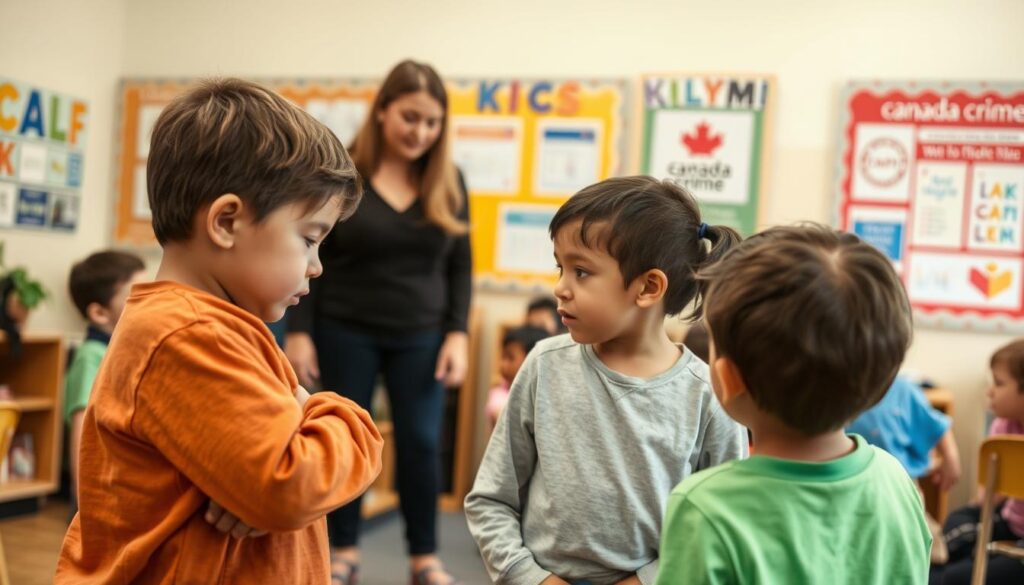
Practice these role-play exercises often to make kids more alert and confident. This active way of learning about safety is important. It helps create a safer world for them.
| Safety Strategy | Description | Benefits |
|---|---|---|
| Practicing Loud Responses | Kids learn to shout “No!” or “Help!” loudly. | It gets people’s attention and keeps danger away. |
| Escaping Grips | Teaching kids to get out of a bad hold. | They get better at escaping danger. |
| Identifying Safe Adults and Spaces | They learn to find safe people and places. | They know where to get help in a pinch. |
The Importance of Knowing Your Child’s Routine
Knowing your child’s daily routine is key for keeping them safe. It helps create a stable environment and lets you keep an eye on their activities.
Best Practices for Daily Activities
Adding safe daily practices to your child’s life is important. Keep track of what they do from morning to evening. Talk about their day regularly. Make sure they know who’s picking them up.
For young kids, knowing their name and where they live can save their lives. Older kids can learn safety through examples and repeating rules. With teens, talk about risks by using real-world scenarios.
Teaching safety means more than warning about strangers. Show your kids how to recognize danger and what to do. Teach them to follow the ‘no-go-tell’ approach with anything or anyone that feels wrong.

Communicating with Schools and Daycare
Talking to schools about safety makes sure your child stays safe and their routine smooth. Keep the school updated about who picks up your child and emergency contacts. Make sure they check who takes your child home.
Working closely with schools and daycares makes everyone more secure. It builds a united effort to keep your child safe.
Creating a Child Identification Kit
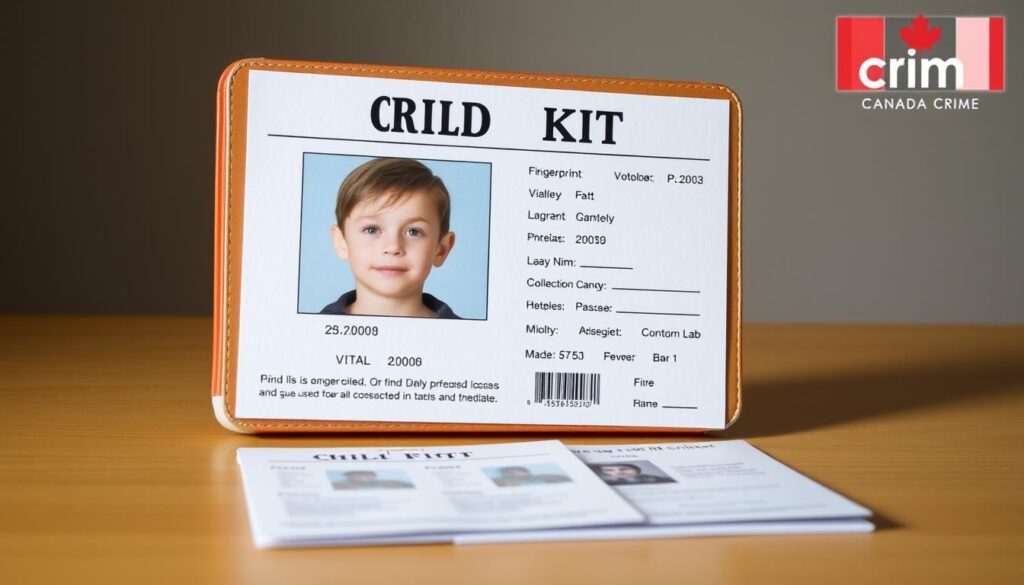
Making a full child ID kit is key for family safety, letting you quickly share your child’s info with authorities in an emergency. This kit should have recent photos, a full physical description, and key medical details. This way, everything about your child’s health and identity is ready when needed.
Start by getting a recent photo of your child, taken in the last six months. Make sure it shows their face clearly without things like hats or sunglasses blocking it. Adding a picture of their whole body helps give a fuller view of what they look like.
Then, gather important details like your child’s name, birthday, how tall they are, their weight, eye color, and any unique marks. Remember, kids change fast, so keep this info updated.
A good child ID kit also includes vital medical info. Write down any health issues, allergies, medicines they take, and who to contact in an emergency. This is crucial for getting them quick help if they need it.
| Essential Items for a Child ID Kit | Details |
|---|---|
| Photographs | Recent headshot, full-body photo |
| Physical Description | Full name, birth date, height, weight, eye color, distinguishing marks |
| Medical Information | Medical conditions, allergies, medications, emergency contact information |
Also, adding a fingerprint card to your child safety kit is smart. Since every person’s fingerprints are unique, they can quickly help identify your child. Fingerprint kits for kids are easy to find through some doctors or local police.
Using these child safety tools helps you make sure your child is safe. Keeping an updated child ID kit means you’re ready for anything. It’s a big part of being prepared for emergencies and helps find your child faster if they ever go missing.
Staying Informed About Common Abduction Tactics
It’s vital to know how abductors work to keep your child safe. Knowing about predators’ tricks helps in making plans to safeguard your family.
Methods Used by Predators
Predators use various tricks to attract kids, such as:
- Offering gifts or money
- Pretending to be someone they know, like a family friend
- Asking for help with something, like finding a lost pet

Teaching kids to spot danger and to never follow a stranger is critical.
Signs to Look Out For
Knowing what looks suspicious can stop abductions. Watch for:
- Strangers who try to be too friendly too fast
- Adults loitering in play areas without a good reason
- Unknown cars driving around your neighborhood or school often
Being alert to how kidnappers operate can greatly lower abduction risks. Talking regularly about this with your kids and their caregivers is key to keeping them safe.
Leveraging Technology for Safety
Using tech to protect kids adds an extra safety layer. With new digital tools growing, knowing what’s out there is key. It helps keep children safe online.
Safety Apps and Gadgets
Safety tools today are diverse. They range from GPS devices to smartwatches for tracking kids. Parents find these very helpful.
Apps like Life360 and Find My Kids let parents know where their kids are. They give alerts on kids’ locations. This offers peace of mind and keeps kids safe.

Online Safety Tips
Protecting kids online is now essential. It’s important to teach them about internet dangers. Use apps like Net Nanny and Norton Family for control.
Kids need to keep personal info private. They should use safe settings on social sites. Talking about digital safety makes the internet safer for them.
What to Do If Your Child Is Missing
When your child goes missing, taking swift and level-headed action is key. Knowing what to do right away and getting in touch with the police quickly can greatly help.
Immediate Steps to Take
The first moments after noticing your child is missing are critical. Begin by checking your home and area closely, then reach out to friends or family who may have seen them. After confirming your child is indeed missing, try to stay calm and start collecting important info.
Gather recent photos, detail what they were wearing last, and remember any places they might have gone. Alert your neighbors and your community to increase awareness and help.
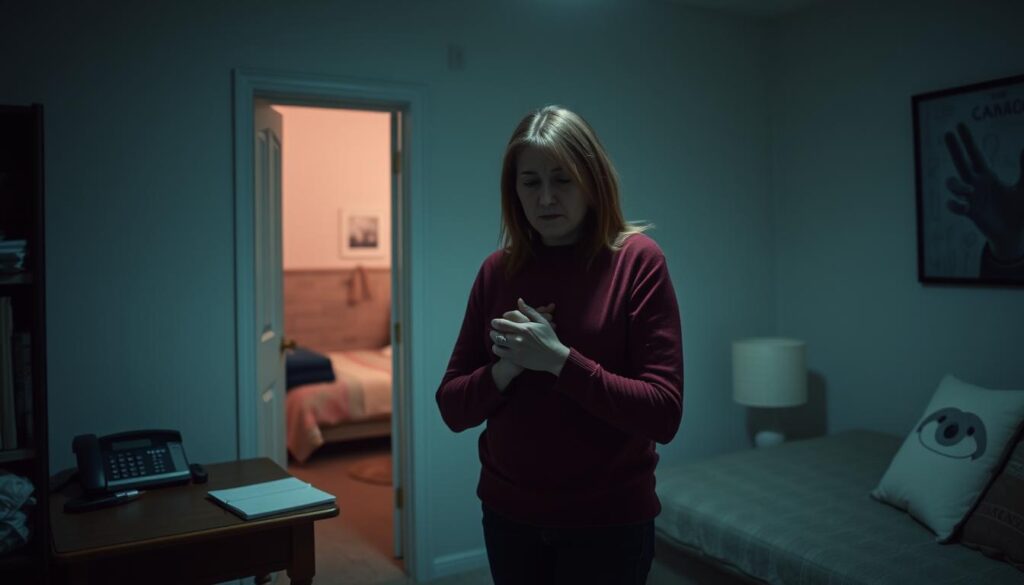
Contacting Authorities
Calling the police should be your first move when you realize your child is missing. Give them all the info you have and ask about an Amber Alert if it fits. Keeping in touch with the police for any updates is crucial. Also, contact the National Center for Missing & Exploited Children for more help.
Knowing the right steps to take and who to call can make a big difference in finding your child. Building a rapport with local law enforcement and related organizations is crucial for these situations.
Discussing Child Safety Measures with Caregivers
Making sure your child is safe with caregivers is very important. It’s essential to talk clearly with them to ensure your child’s safety. When talking about child safety, several key points need attention.
Start by giving caregivers detailed caregiver safety instructions. This includes daily routines, emergency contacts, and specific safety rules. It’s important they understand these are serious and feel okay asking questions.
Also, emphasize the need to follow pick-up routines closely. This helps keep your child safe from strangers. Be clear about who can pick up your child and when. It’s critical caregivers check each person’s identity.
Another important part of discussing child safety is teaching about staying alert. Tell caregivers about common dangers and what they can do to keep your child safe. This includes watching them during play and following safety rules both at home and outside.
Finally, keep talking to your caregivers. Check in with them to go over any worries or updates about your child’s well-being. Working together helps make sure your child is always looked after properly.
| Caregiver Safety Instructions | Child Safety Measures | Routines and Protocols |
|---|---|---|
| Emergency contact numbers | Verify identities for pick-up | Adherence to daily routines |
| List of authorized individuals | Supervision during activities | Communicating any changes immediately |
Community Engagement and Creating a Safety Network
It is key to involve the community in making a strong safety net for our kids. This means everyone in the area working together. Setting up neighborhood watch groups and getting families involved in safety practices helps protect everyone.
Organizing Neighborhood Watches
Neighborhood watches help make our communities safer. They get neighbors to watch out for each other and report anything odd. Start by planning meetings and picking someone to lead. Use social media to communicate and remind people to be on the lookout.

Involving Friends and Family
Getting your family and friends involved in safety matters a lot too. Teach them why community safety is crucial. Host workshops and events to talk about how to stay safe and spread useful info. This makes sure everyone, even the kids, knows how to help keep things safe.
Tips to Prevent Abduction Under 14
To keep kids under 14 safe, use various strategies. It’s key for parents and guardians to use these actionable safety tips well. This helps lower the chances of abduction.
Tell kids about “stranger danger.” Explain how bad people might try to trick them with gifts or by pretending to be a friend. Stress that they shouldn’t take anything or go anywhere with strangers.
It’s also smart to talk often with your kids. Knowing what they do each day and checking up on them helps keep them safe. For example, call or text them when they get to school and when they’re leaving. This helps you know where they are, so you can act fast if something’s wrong.
Being part of community watch groups can make a big difference in keeping kids safe. New programs in areas where there’s lots of crime are starting to help a lot. Early results show a 14% drop in problems involving kids. Learn more about the impact of these efforts.
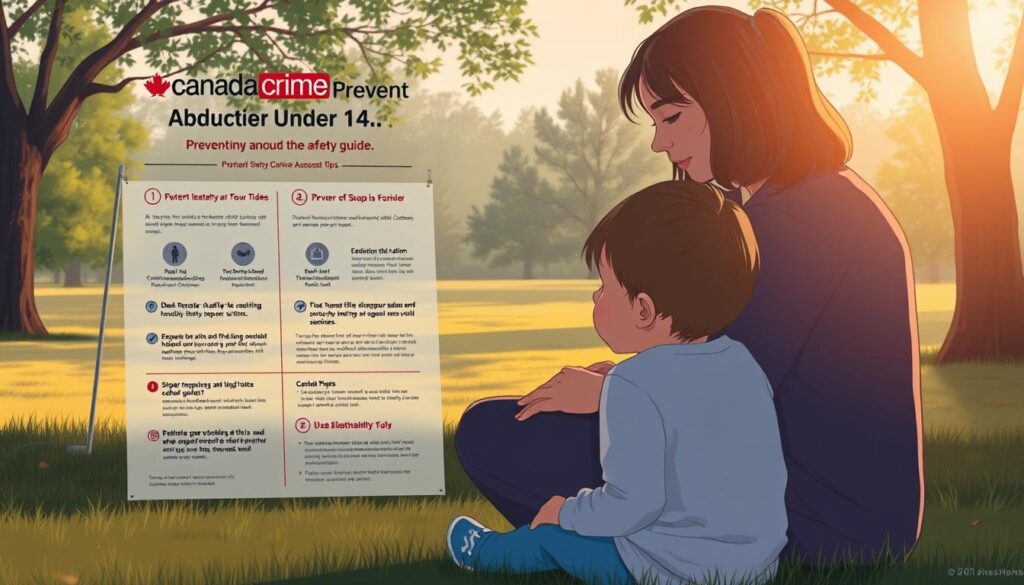
Using technology also adds safety. GPS trackers and safety apps let you know where your kid is. Alerts can quickly tell the police if there’s trouble. Parents find these tools very helpful for peace of mind.
Also, talk openly with your kids. Make sure they’re okay telling you if they see something weird or feel uneasy. When they trust you, it’s easier for them to talk about their worries. This lets you help them better, based on your child abduction prevention guide.
All these steps together make a strong shield against abduction. Stay alert and informed to make a safe space for your child to grow.
The Role of Schools and Public Places in Child Safety
The safety of children is very important in our community. Schools and public places are key in making sure kids are safe. They do this by having strong safety rules at schools and safety steps in places like parks and malls.
This makes sure children are protected and feel safe wherever they are. Making safe spaces where kids can go if they feel in danger is very important.
Policies and Practices
Schools need good safety rules to keep children safe. They use safety drills, secure entries, and have security people around. Public places are also important. They use cameras, have areas for kids to be watched, and plans for emergencies.
Putting these together, we make a safety net that covers both schools and public areas.
Safe Spaces for Children
It’s crucial to have safe spots for kids in schools and public places. These places are where kids can feel safe and ask for help if they need it. Schools have special areas like counseling offices where kids can go.
In public places, there are areas with staff and signs to help kids find safety. With school policies and public safety steps, we lower the risk of danger. This makes these places safer for kids.
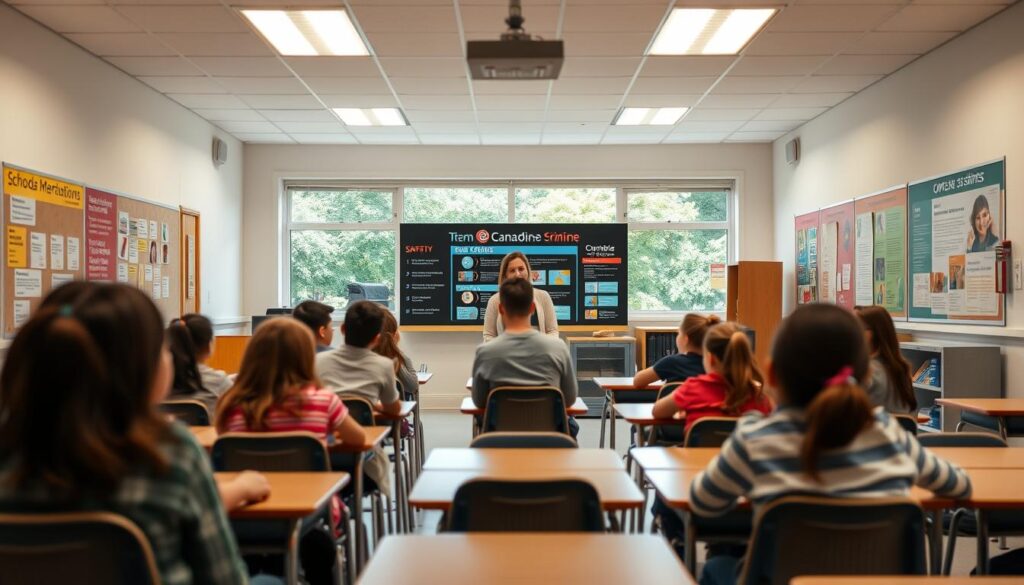
| Safety Measure | Schools | Public Places |
|---|---|---|
| Security Drills | Regular practice with students and staff | Emergency drills for staff |
| Secure Entry | Access controlled entry points | Monitored entry and exit points |
| Surveillance | Security cameras in key areas | Extensive CCTV coverage |
| Safe Zones | Counseling offices and supervised areas | Designated child safety areas |
Conclusion
As we wrap up our talk on keeping kids safe, it’s key to stay alert and take action early. By making safety talks a regular thing, parents and those who take care of kids can really lower the dangers. Talking about the risks of child taking and practicing safety with role-play can make kids safer.
It’s also vital to know your kid’s daily schedule and use technology to keep them safe. Being up-to-date about how child takers operate and having an ID kit for your child are crucial. Good communication with schools and others who look after your child helps a lot. This strengthens safety and builds a community that looks out for each other.
By following tips to prevent abduction and using these methods, you can better protect kids from harm. Child safety is a journey that needs constant awareness, learning, and working together. Let’s keep talking about how to keep kids safe to build a safer place for them.

